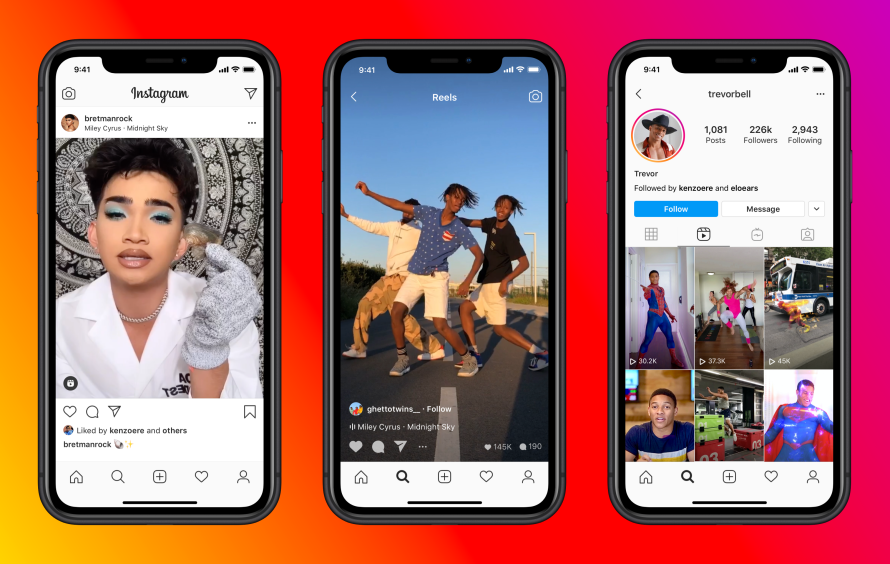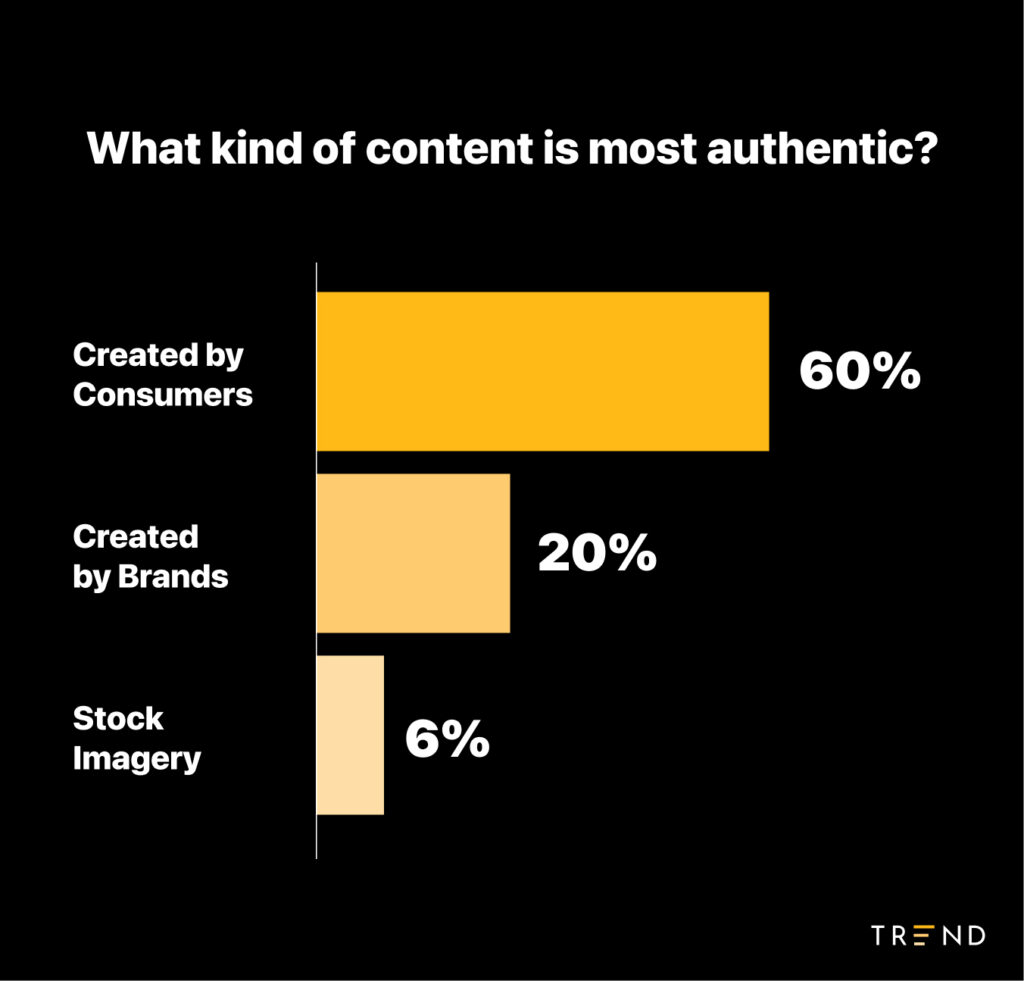As always in the world of the internet, changes come thick and fast. One minute we’re told to keep videos short, the next it’s all about long-form content. You’re having fun sharing square photos on Instagram, only to be told it’s “no longer a square photo-sharing app”.
Come on, The Internet. Slow down and let us catch our breath.
In January 2023, a huge milestone was reached when Meta announced that “50% of all people’s time on our platforms is now spent consuming video.” So it feels like now is a good time to take stock of where video content is at, and where it’s going over the next 12 months. The team and I put our heads together and came up with this list of key video content trends.
As usual with these blogs, I’ll be making recommendations that should suit most video content strategies. So keep reading, whether you produce everything in-house, outsource to companies like ours, or use a mix of both approaches. Here’s our top five video content trends for 2023…
1. Long-form = long term
It’s a myth that only short videos work well on Facebook. In fact, both short and longer videos can resonate, as long as the length makes sense for your content and keeps fans coming back for more.
Meta Blueprint
Don’t get me wrong, short-form video isn’t going anywhere. We all still have tiny attention spans, and we’re all still addicted to scrolling. But don’t fall into the trap of concentrating all your energy on tiny videos that don’t really speak to people in any meaningful way.
Sure, short-form video always has a tantalising chance at going viral, but it’s the long-form stuff that makes the difference in the long term. A longer duration means more depth, more nuance, more chance to get your story or message across. Ultimately, it means a more committed following.
That’s why Facebook recommends that for video series and live streaming, the duration should be at least three minutes. Even on TikTok, while the most popular videos tend to be around 9–15 seconds long, many creators are now posting lengthy vlogs in multiple parts. It’s worth noting that the max duration for TikTok videos increased to 10 minutes in 2022, having shifted to three minutes the year before.
Think of short-form video as a way to increase reach. Think of long-form video as the key to long-term loyalty and engagement. And don’t forget it’s fine to use both, even within the same campaign – like a 10-second Instagram ad that leads to a landing page with more in-depth video content.
2. Can I BeReal a second?
Can I be real a second? For just a millisecond? Let down my guard and tell the people how I feel a second?
Right Hand Man from ‘Hamilton’ by Lin-Manuel Miranda
Let’s face it, social media can be pretty fake sometimes. So we’re relieved to be able to list authenticity as one of our video content trends for 2023. The rise of BeReal has been a welcome rebellion against the airbrushed fakery Instagram is infamous for. Alongside that rise we’ve seen a lot of noise about super casual, hyper relatable content.
What does this look like in practice for brands and organisations? It can mean engaging micro influencers – that’s people with a following in the thousands or tens of thousands – or enlisting your customers to provide user-generated content. See section 5 for more on UGC…
Another way to be real is to post videos from members of staff, sharing their concerns, passions or interests. Personal stories with an emotional hook often perform really well on LinkedIn – and video is the ideal format to tell them.
3. The revolution will be vertical
33% Of Gen Zers Trust TikTok More Than Doctors, New Survey Shows
Forbes
Portrait video has been hugely significant ever since the launch of Snapchat, which was (look away now if you don’t want to feel old) TWELVE YEARS AGO THIS YEAR. Only recently, though, has it reached the level of saturation where it’s the predominant video format pretty much everywhere.
Twitter, YouTube and TV/film still mainly favour landscape, but it’s not totally clear cut. Twitter has experimented with an Instagram Stories-style feature. YouTube Shorts have hit 30 billion daily views. Even Netflix has been experimenting with short-form portrait content, with its Fast Laughs feature.

The big reason vertical video has taken off so much is that more and more video is watched on mobile. Most of us hold our phones vertically by default, and we’re a little bit too lazy to turn our phones ninety degrees. That’s how we arrived where we are now, with everyone doubling down on portrait video, even though landscape is much more natural. Because as you may have noticed, our eyes are next to, rather than on top of, each other.
We shouldn’t abandon horizontal video, though – it still has massive merits. Let’s say you’re a B2B company. Is it more likely that your customers are seeing your content on a phone, or on a work computer? Or imagine you’re producing an explainer video for your website: portrait will look great on mobile but (usually) terrible on desktop. Landscape, on the other hand, will look good on both. This kind of thing needs to be considered early on in the production process, so you know how you’re filming and why.
4. Virtual communities and virtuous video
After the launch of the campaign, Indeed’s audience viewing affinity for LGBTQ+ content shifted upward, indicating their social video strategy influenced digital behaviors and also attracted new audiences with diverse viewing habits.
Tubular Labs, Navigating Social Video in 2023: What you need to thrive
Tubular Labs listed ‘Virtual communities for good’ as one of the things brands need to thrive in 2023. A virtual community is any group of people, connected via the internet, that has shared values or interests. Tubular’s report used the example of Indeed.com’s Pride campaign, which highlighted the workplace experiences of LGBTQ+ professionals.
Using a mix of polished video content and influencers, Indeed.com gained respect and recognition from LGBTQ+ people and their allies. What’s more, they made a genuine difference at the same time, raising awareness of the challenges faced by some candidates.
Now more than ever, people want to support brands and organisations that align with their passions and interests. With a bit of research, there’s an opportunity to partner with good causes that will resonate with your target customer, and to tell those stories through video and other content marketing.
5. User-generated content(ment)
We’ve actually trained shoppers to ignore branded messages because they’re repetitive, spammy, and annoying.
Trend, The Ultimate Guide to User Generated Content
We’re occasionally guilty of dropping confusing media jargon and three-letter acronyms, one of which is UGC, our fifth and final video content trend. UGC, or user-generated content, is any media that is created by your audience and repurposed by you. It can include influencer content – which is still a big deal. Usually, though, UGC refers to crowdsourced submissions from real customers or users.
There are three big advantages to user-generated content:
UGC can be gathered remotely. Like our WAGGGS example above, you can easily gather video clips and stills from people all over the world. Without getting on a single plane. Take a second to appreciate how much of a gift that is. This makes it easier to include people from different countries or who don’t feel comfortable being filmed by a crew. It enables you to involve people who are influential but too busy to take part in a filming day. This hands-off approach also means that…
UGC is cheap. If you’re not spending all your budget on a professional film crew, you can spend that money on an editor. A skilled and experienced producer/editor will work with you to craft a beautiful on-brand story from the hours of footage you’ve been sent.
UGC is authentic. This is the reason UGC is a big deal right now. Especially when it comes to parting with our hard-earned cash, we want to hear from real people before we decide.

UGC might not be right for every organisation. It depends partly on your brand, and partly on your audience. Think about the level of ‘quality’ they expect from you, and think about what you can reasonably ask of them. But if it feels like it might be useful for you, then start putting some feelers out – if you don’t ask, you don’t get.
What comes next?
Consider all of these elements, and how they might fit into your video content strategy. Think about things like aspect ratio (landscape vs portrait) alongside duration, audience and platform.
Maybe you have a more polished landscape video produced every quarter, which sits on your YouTube and website. Every week your CEO posts a short vlog to LinkedIn – under a minute, in portrait mode. Your in-house marketing team posts short UGC clips every day on Instagram Stories, highlighting specific products or services.
Keep asking yourself what you’re doing with video, and why. Don’t just blindly jump on the latest shiny video trends. Be aware of them, and then figure out whether you can apply them to your strategy.
Get in touch
If you want to chat about the state of social video, or to see if we could work together on a video production project, please drop us a line. We’d love to hear from you.

